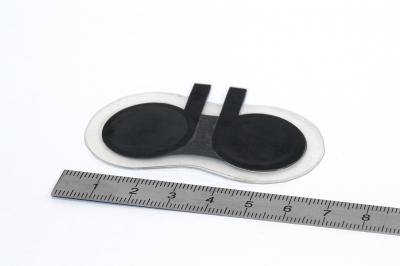Printable batteries

Printable electronics have taken off in recent years, and there are now industrial-scale printing machines that can efficiently deposit a variety of flexible electronic components onto flexible substrates to create wearable sensors, displays, smart packaging labels, and other printable products. However, developing printable, flexible energy-storage devices, such as supercapacitors and batteries has lagged behind.
Now, researchers announced a paper-thin battery that can be produced cost-effectively on large scale. Scientists from the Fraunhofer Research Institution for Electronic Nano Systems (ENAS) in Chemnitz, Germany, together with colleagues from TU Chemnitz and Menippos GmbH say the batteries are printed using a silk-screen printing method similar to that used for t-shirts and signs.

The small, thin battery comes out of the printer and can be applied to flexible substrates. (Credit: Fraunhofer ENAS)
They describe the process as a type of "rubber lip" pressing the printing paste through a screen onto the substrate. A template covers the areas that are not to be printed on. They said that through this process it is possible to apply comparatively large quantities of printing paste, and the individual layers are slightly thicker than a hair.
Take a look at the printed battery specifications below to see how unlike it is to any conventional battery:
- It weighs less than one gram on the scales.
- It's under one millimeter thick and can therefore be integrated into bank cards, for example.
- It contains no mercury and is in this respect environmentally friendly.
- Its voltage is 1.5 V, which lies within the normal range. By placing several batteries in a row, voltages of 3 V, 4.5 V and 6 V can also be achieved.
- It's composed of different layers: a zinc anode and a manganese cathode, among others. Zinc and manganese react with one another and produce electricity. These layers dissipate gradually during use, making them suitable for applications which have a limited life span or power requirement, like greeting cards.
The researchers say they've already produced the batteries on a laboratory scale. At the end of this year, the first products could possibly be finished.
"Our goal is to be able to mass produce the batteries at a price of single digit cent range each," states Dr. Andreas Willert, group manager at ENAS.